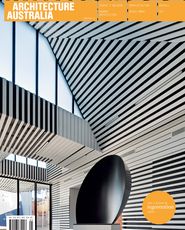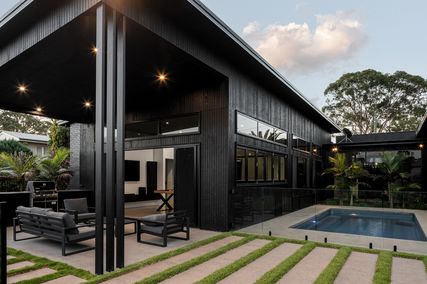
Timothy Moore, editor of Architecture Australia.
At the beginning of 2011, a new design movement was announced via a publication whose name was also its message: Sustainism is the new modernism. The movement eschewed ethical, collaborative and environmental design and was underpinned by a new effort to brand sustainability (because brand communication was the problem, of course). The cover showed the movement’s logo, a pert trefoil knot similar to the universal recycling symbol. The authors saw a problem with green branding and an opportunity to capitalize on this miscommunication.

Sustainism is the new modernism by Micheil Schwarz and Joost Eiffers.
Sustainable design clearly needs more traction, but this reframing of it underlies a perverse need for more production, and ultimately more growth.
The persistent demand for a new movement – whether it be sustainism, parametricism, supermodernism, “humanitarianism” or the return of postmodernism, despite the fact it never left us – is the one constant we can expect in the mediation of architecture. Step back further into the twentieth century and the age-old “-ism” becomes even more resolute: deconstructivism, new urbanism, brutalism, critical regionalism, modernism, expressionism, futurism.
Architectural discourse provokes constant change as it careens towards something new, and in this cycle of deconstruction and reconstruction, a culture is perpetuated that is self-defeating. To make a declaration for the new requires the dramatic death of what precedes, and the “killer” is usually the architect. The “deceased” is perhaps the unfortunate architect also.
The tragic thing is that a desire for innovation does not necessarily lead to progress: a death could be in vain. This notion has been coopted by those who have an underlying pessimism about where we are going, a resistance to becoming new. Their reaction to the threatening new has been an overwhelming urge to preserve the past. The policing of heritage colours on your suburban street, the persistence of NIMBYism (Not In My Back Yard), or even the banning of new minarets in Switzerland (since 2009) – all of these happen in order to maintain a status quo, a tradition.
The fissure between the future and the past not only demonstrates a lack of faith in reality, but is lived out, often violently, in the events of today.
Rather than be complicit in the return of the new – albeit with a critique – or scurry back into the past, is it possible for architecture to break from the twin shackles of the past and future?
Architecture has the potential to imbue radical qualities into today’s reality, and the projects in this issue of Architecture Australia are very much about today; they are not dissociated from their context. Searle x Waldron Architecture’s Annexe at the Art Gallery of Ballarat melds the typologies of high-Victorian Ballarat – bandstand, verandah and public hall – while Harmer Architecture grafts the surrounding suburban elements of factory and house onto a church. The projects, rather than remaining within the borders of what we know, return these typologies neither in a fixed or familiar way, but there are recognizable resonances. This is the rapture of architecture, where everyone, futurist and traditionalist alike, can find an entry point in the presence of today. Really, it’s nothing new but seeing anew.
Source

Archive
Published online: 2 Jan 2012
Words:
Timothy Moore
Issue
Architecture Australia, January 2012














